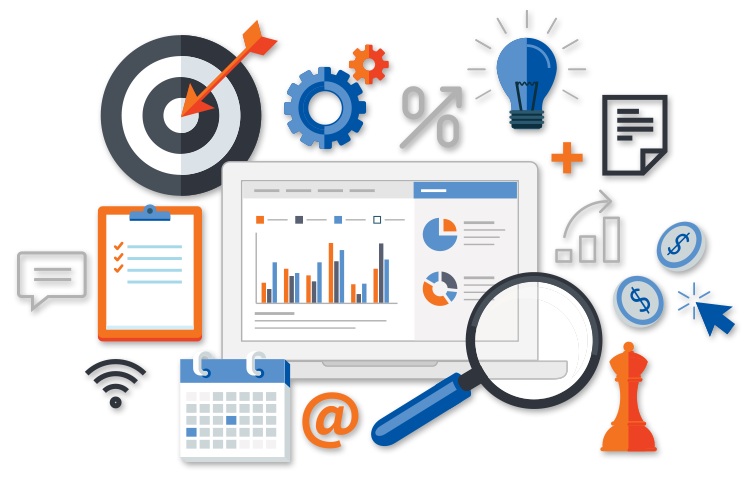Unlock Business Insights With Advanced Analytics Tools
In today's data-driven landscape, the capacity to unlock service insights with innovative analytics tools is coming to be increasingly critical for organizations looking for an affordable edge. What are the vital considerations that companies must address to effectively harness these innovative analytics capacities?
Significance of Advanced Analytics

Furthermore, the competitive landscape needs that organizations not only react to market modifications yet likewise anticipate them. Advanced analytics equips services to comprehend consumer choices, improve functional effectiveness, and reduce risks effectively. By leveraging these devices, companies can boost their decision-making processes and drive development.
Furthermore, the integration of innovative analytics fosters a society of constant renovation, where organizations can fine-tune their techniques based on empirical proof. As fields such as money, medical care, and retail significantly rely upon information to educate their operations, the value of advanced analytics will only remain to grow, making it an essential component for sustained success in today's data-driven economy.
Key Attributes of Analytics Tools
Advanced analytics devices are defined by a variety of important functions that boost their performance in information evaluation and decision-making (Analytics). Among the vital features is information assimilation capability, which enables seamless gathering of data from different resources, promoting comprehensive evaluation. This makes certain that companies have a holistic sight of their information landscape
Furthermore, progressed analytics tools commonly include durable analytical and predictive modeling capabilities. These features allow organizations to forecast patterns and identify patterns, leading to even more educated critical choices. Visualization tools are additionally important, giving user-friendly visual representations of data, which simplify intricate information and make understandings more accessible to stakeholders.
One more crucial aspect is the consolidation of artificial intelligence formulas, which improve the capacity to examine huge datasets and discover concealed insights without explicit programs. Furthermore, easy to use user interfaces enable non-technical users to leverage these devices successfully, democratizing data gain access to across the organization.
Sorts Of Advanced Analytics
While numerous advanced analytics methods exist, they can generally be categorized right into numerous crucial types that offer unique purposes within organizations.
Detailed analytics focuses on summing up historical information to recognize trends and patterns. It offers insights into what has actually taken place in the past, allowing organizations to make informed decisions based on empirical evidence.
Anticipating analytics, on the other hand, utilizes analytical formulas and artificial intelligence techniques to forecast future results based on historic data. This type is particularly beneficial for risk analysis and demand forecasting, allowing services to plan for potential obstacles and possibilities.
Authoritative analytics goes a step better by recommending activities based upon anticipating understandings. Analytics. It makes use of optimization and simulation methods to recommend the most effective program of activity, ensuring that companies can make data-driven decisions with confidence
Execution Techniques
Successful execution methods for innovative analytics are essential for companies seeking to harness the full capacity of their information. To start with, a clear roadmap must be established that lines up analytics efforts with overall organization objectives. This needs a deep understanding of business objectives and the certain inquiries analytics can answer.
Next, buying the ideal modern technology and devices is essential. Organizations should assess readily available platforms for scalability, simplicity next page of use, and assimilation capabilities with existing systems. This guarantees that data can be gathered, refined, and assessed effectively.
Additionally, cultivating a data-driven culture is important. Training staff members on analytics tools and techniques empowers them to use understandings successfully in decision-making. Engaging stakeholders throughout divisions can help with buy-in and encourage collaboration, improving the overall success of analytics jobs.
In addition, try this organizations need to focus on information quality and administration. Executing robust data administration methods makes certain that the understandings generated are reputable and accurate. Continuous assessment and version of analytics procedures permit organizations to adapt to changing organization requirements and technical innovations, ultimately driving sustained value from their analytics initiatives.
Future Fads in Analytics
As companies carry out robust analytics techniques, it is crucial to continue to be knowledgeable about the developing landscape of analytics technologies and methodologies. Future fads in analytics are poised to transform exactly how services acquire insights, optimize operations, and drive decision-making.

Another trend is the rise of augmented analytics, which automates data preparation and understanding generation, decreasing the reliance on data professionals. This democratization of analytics encourages employees in all levels to utilize information in their roles.
In addition, the change in the direction of real-time analytics will certainly make it possible for organizations to respond quickly to market changes and consumer choices, boosting agility and competitiveness. As information personal privacy policies come to be extra rigid, analytics options will additionally need to prioritize honest data usage, making certain compliance while maintaining robust understanding generation. Accepting these patterns will certainly be important for organizations seeking to preserve an affordable side in an increasingly data-driven world.
Final Thought
To conclude, advanced analytics tools play an essential role in changing information right into workable insights, driving tactical growth and functional performance across organizations. Their key functions, including predictive modeling and artificial intelligence, facilitate the exploration of covert patterns and fads. Effective execution methods ensure that these devices are incorporated into organizational procedures, while emerging fads suggest an ongoing advancement in analytics capabilities. Inevitably, promoting a data-driven culture stays important for navigating the intricacies of contemporary service environments.
Advanced analytics encompasses a suite of strategies, consisting of anticipating modeling, machine discovering, and information mining, which make it possible for services to reveal patterns, projection patterns, and enhance operations.
Effective implementation approaches for sophisticated analytics are essential for organizations seeking to harness the complete possibility of their information. Continuous analysis and model of analytics processes permit organizations to adapt to altering business demands and technological improvements, inevitably driving sustained worth from their analytics efforts.
As information personal privacy guidelines come to be extra rigid, analytics remedies will certainly also require to focus on moral data usage, ensuring original site compliance while maintaining robust insight generation.In verdict, advanced analytics tools play a critical role in changing data into actionable understandings, driving critical growth and operational performance across organizations.